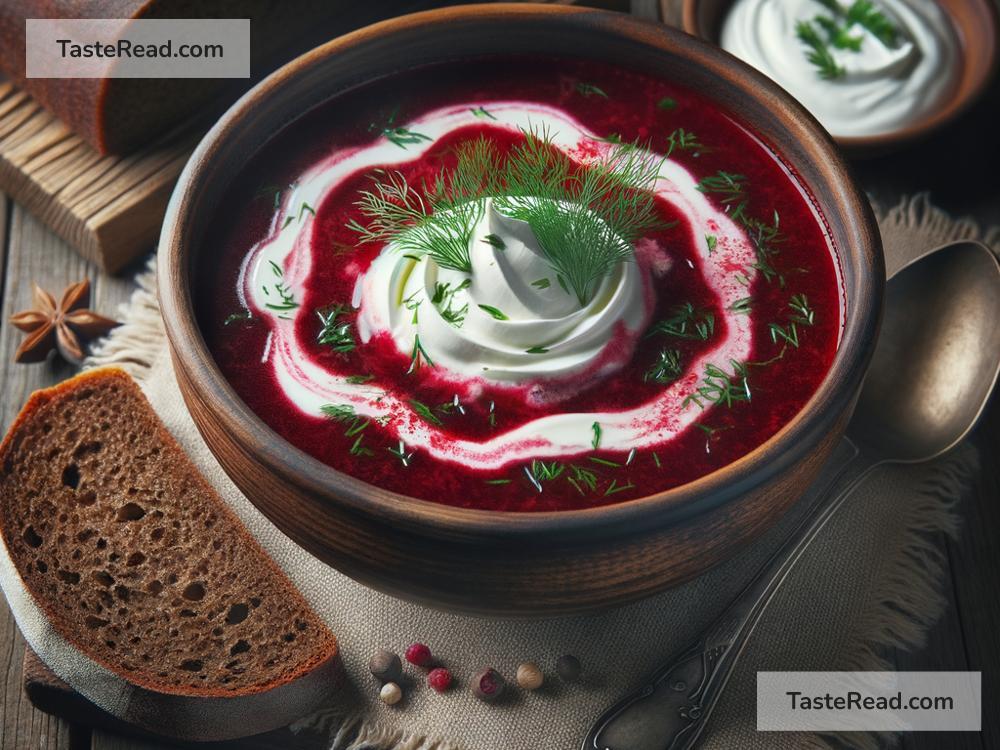The Journey of Borscht: Emblem of Eastern European Flavor
When you think of Eastern European cuisine, what’s the first dish that pops into your mind? For many, the hearty, vibrant soup known as borscht stands out as a culinary emblem of this region. But how did this humble beet-based soup become such a legendary and symbolic dish of Eastern Europe? Let’s dive into the captivating journey of borscht and explore how it became so much more than just a meal.
Origins and Evolution
Borscht’s roots stretch back centuries, intertwined with the lives of Eastern European peasants. Its base ingredient, the beet, was both accessible and affordable, making borscht a staple for those seeking sustenance and warmth, especially during the cold months. Although it’s often associated with Russia, the soup’s origin traces back to Ukraine and has been embraced, adapted, and celebrated across many Eastern European countries, including Poland, Belarus, and Lithuania.
The evolution of borscht mirrors the diverse cultures and traditions across Eastern Europe. While the classic red borscht, colored by its key ingredient, the beet, remains the most recognized version, the soup can take many forms. Some add meat for a richer flavor, while others prefer a lighter, vegetarian version. Ingredients vary widely from region to region, reflecting local tastes and seasonal availability, making borscht a tapestry of Eastern European culinary traditions.
A Cultural Icon
Borscht’s ascent from a peasant food to a cultural icon reflects its deep connection to Eastern European identity. It’s a dish that carries historical significance, embodying the resilience and resourcefulness of the people. Beyond its nutritional value, borscht is steeped in traditions that have been passed down through generations. It’s the centerpiece of family gatherings and festive celebrations, a symbol of warmth and hospitality.
Moreover, borscht has transcended its roots to become a source of national pride, especially in Ukraine where it’s considered the national soup. Its prominence in Ukrainian cuisine has even sparked friendly rivalries with neighboring countries over the “correct” way to prepare the dish. This playful debate underscores borscht’s unifying power, bringing people together over a shared love for this timeless soup.
Borscht Goes Global
In the modern era, borscht has spread far beyond the borders of Eastern Europe, captivating food enthusiasts around the globe. Its journey into the international culinary scene can be attributed to the waves of Eastern European immigrants who brought their beloved recipes with them, sharing the flavors of their homeland with new communities.
Today, borscht can be found in the menus of restaurants worldwide, each offering their unique spin on this classic dish. Its global appeal lies in its versatility and the simplicity of its core ingredients, allowing it to be adapted to suit different tastes and dietary preferences. From vegan and gluten-free versions to innovative gourmet interpretations, borscht has proven itself to be a versatile and enduring dish.
The Secret Ingredient
At the heart of borscht’s enduring appeal is its simplicity. The soup’s humble beginnings are a reminder of the importance of making the most out of modest ingredients. Yet, ask anyone about their secret to the perfect borscht, and you’ll likely hear a multitude of answers. Whether it’s a special cooking technique passed down through generations or the addition of a particular spice, everyone has their unique touch that makes their borscht special.
But perhaps the real secret ingredient isn’t something tangible. Maybe it’s the love and care that goes into making a pot of borscht, the memories it evokes of shared meals and laughter, and the sense of connection to one’s heritage. This emotional component might just be what transforms a simple beet soup into a symbol of home for many Eastern Europeans.
A Culinary Legacy
The story of borscht is a testament to the power of food to transcend borders, connect cultures, and touch hearts. From its humble beginnings to its status as an Eastern European icon and a global culinary attraction, borscht embodies the spirit of the region’s rich history and diverse cultures. It’s a dish that invites exploration and experimentation, welcoming all to share in its warm embrace.
As it continues to find new admirers worldwide, borscht’s legacy as a symbol of Eastern European cuisine is secure, ensuring that this vibrant, comforting soup will be cherished for generations to come. So, the next time you enjoy a bowl of borscht, remember, you’re not just tasting a soup. You’re savoring a piece of Eastern European heritage, shared across tables and borders, connecting us all one spoonful at a time.

